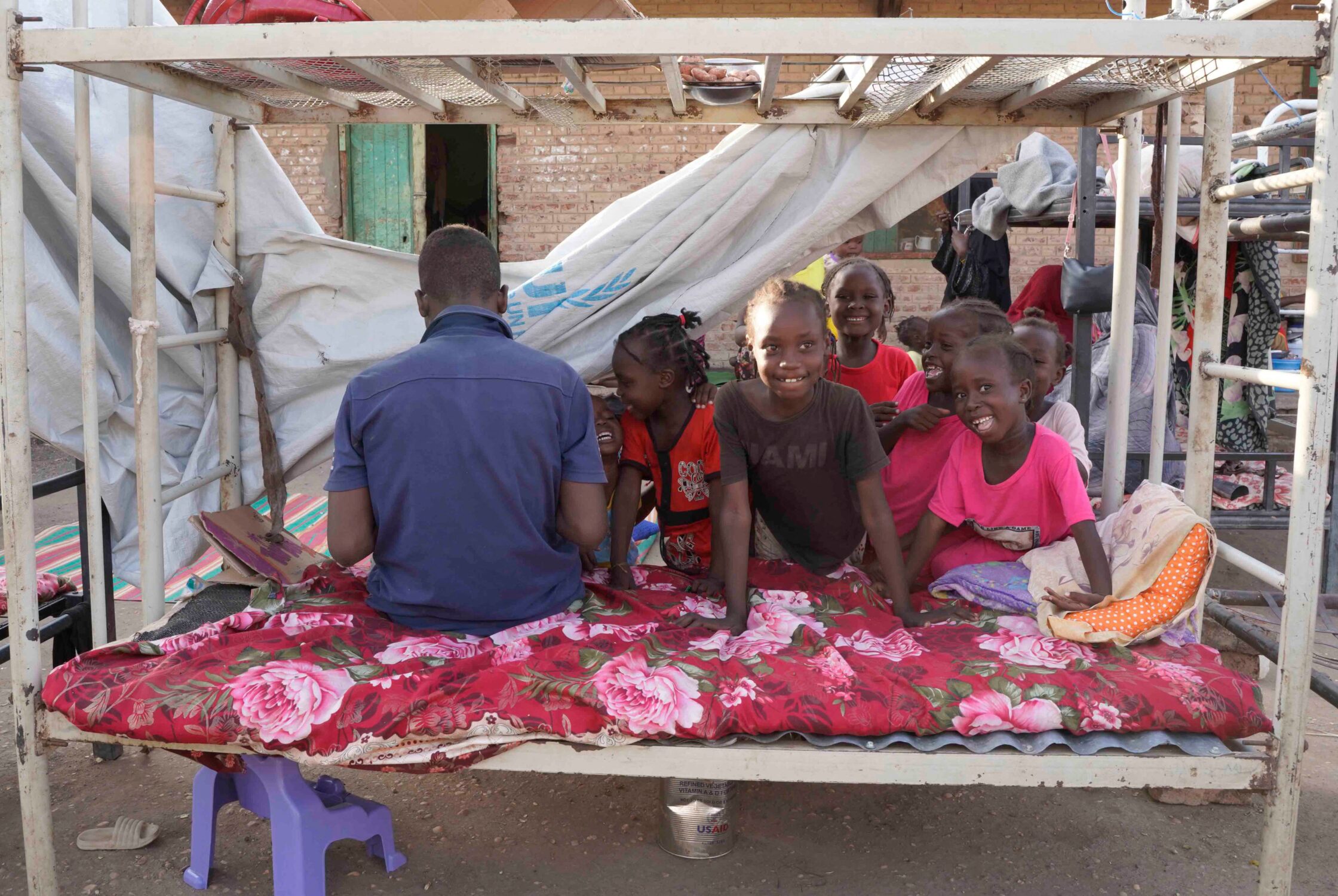The Nation: We Cannot Let Sudan Starve

This piece was originally published in Nation Africa.
With all eyes on the mounting catastrophe in Gaza, the world must not look away while conflict and atrocities in Sudan put the lives of millions—including children—in peril. Sudan’s conflict, now six months in, is quickly becoming a crisis of starvation. To fend off potential famine, the United States and other donor countries must urgently act. The lives of millions are at risk, and conditions are set to reverberate throughout the region.
The conflict in Sudan between the Sudanese Armed Forces and the Rapid Support Forces that begin in April has exacerbated the country’s already precarious humanitarian crisis. The fighting has forced a million people from their homes each month. Before the conflict, a third of people in Sudan needed humanitarian aid. In the last year, that number has nearly doubled. According to the Integrated Food Security Phase Classification (IPC), the standard tool for measuring levels of hunger, more than 20 million people (about the population of New York) across Sudan—or almost half of the population—face severe food insecurity. This includes 6 million people (about twice the population of Arkansas) who are on the doorstep of famine. According to UNICEF, 55,000 children require treatment for the most lethal form of malnutrition.
This tragedy of mass, child hunger today in Sudan is already chilling. But without immediate action, the worst is yet to come. The Sudanese conflict also impacts food insecurity for regional countries, notably Chad and South Sudan, which rely on Sudan’s capital Khartoum—the epicenter of the fighting—as a transit hub. The conflict has destroyed the agriculture supply chain in Sudan. The three broad regions experiencing food insecurity—Khartoum state, Greater Darfur, and Greater Kordofan—unsurprisingly are regions of the country experiencing the highest concentration of conflict.
The Under-Secretary-General for Humanitarian Affairs and Emergency Relief Coordination Martin Griffiths recently called Sudan’s crisis a “humanitarian emergency of epic proportions” because of hunger. Despite this stern warning, international donors have not stepped up. Six months since its outbreak and despite its severity, the Sudanese humanitarian crisis has received scant diplomatic attention and funding. The UN’s Sudan Humanitarian Response Plan appeal requested $2.57 billion and is only 32 percent funded. Meanwhile, the World Food Program (WFP) is dealing with global funding constraints and expanded food insecurity that has, unfortunately, already required cuts in cash assistance and food aid to dozens of countries.
Sudan needs more support. While the United States remains the largest humanitarian donor in the response, most recently adding $163 million in new humanitarian funding, the United States and other donors must still yet increase emergency food aid alongside resiliency investments for those inside Sudan and the region. As we enter Fiscal Year 2024, which began on October 1, 2023, the U.S. funding landscape remains challenging. The United States Congress has not completed the regular Fiscal Year 2024 appropriations process, including for bills that include food assistance and humanitarian accounts. The uncertainty in programming planning will likely impact new funding announcements even for more recent emergencies. Sudan is suffering as a result.
For decades, Sudan has been a challenging operating environment for humanitarian agencies. The country’s collapse into civil war has pushed this environment to the extreme. Denial of humanitarian access and the targeting of aid workers have made matters worse. In August, the World Food Program country director for Sudan said he had “never faced an operating environment as challenging,” as in Sudan amid the deaths of at least 19 humanitarian workers and attacks on medical facilities and humanitarian supplies.
With increased support, the United States and other countries of influence must also pressure the belligerent parties to provide access and cease such violations of international humanitarian law. Donors must push back on attacks on aid workers and denial of access. Donor agencies must put in place a robust monitoring and evaluation framework to prevent the parties from using the aid at the expense of the people in need. Additionally, since the outbreak of the conflict, front-line local Sudanese groups have been delivering aid under challenging circumstances. Any large-scale humanitarian aid delivery should include them.
Unless donors step up the humanitarian and diplomatic efforts, including steps to prevent misuse of aid, Sudan and the wider region will witness more suffering and starvation. Not because of a lack of knowledge about the situation but because of a lack of political will.
Internally displaced Sudanese reside in the Hasahisa secondary school on July 10, 2023, transformed to house people fleeing violence in the war-torn country. Conflict-torn Sudan is on the brink of a “full-scale civil war” that could destabilise the entire region, the United Nations warned on July 9, after an air strike on a residential area killed around two dozen civilians. (Photo by AFP) (Photo by -/AFP via Getty Images)